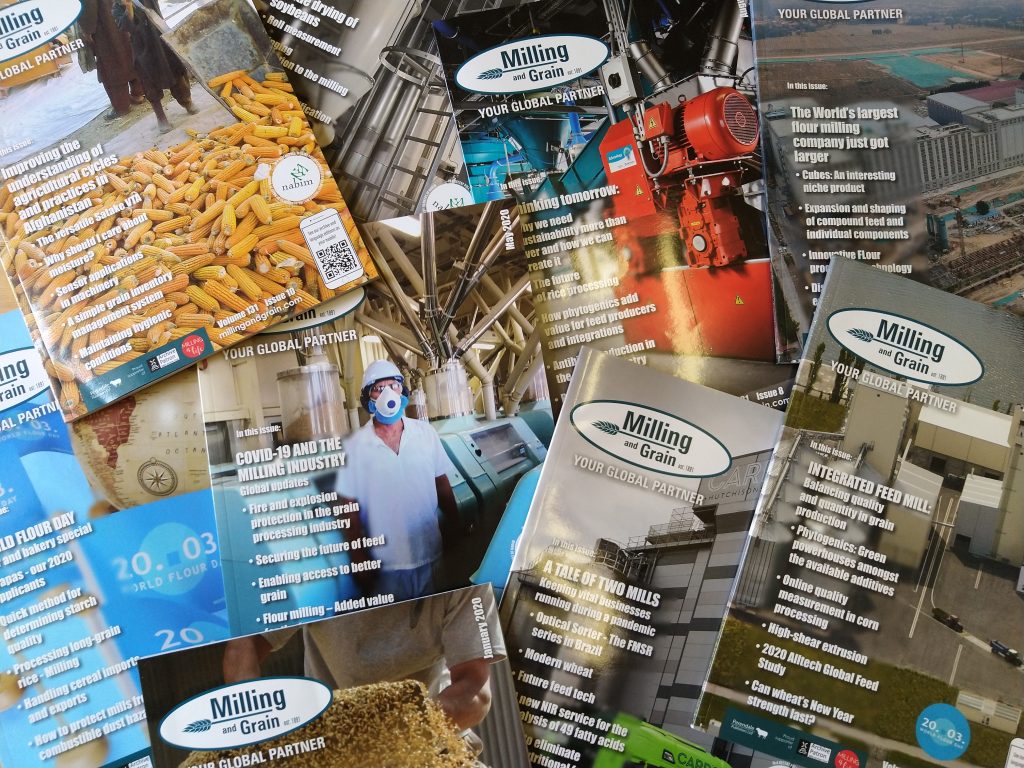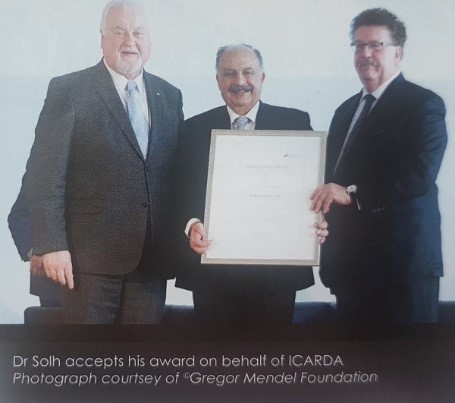
During the lockdown I have been reading through past issues of Milling and Grain, a monthly magazine by Perendale publishers Ltd. Milling and Grain is the successor to Milling and the titles have serviced the grain, feed and flour milling industries since 1891. Here you can find information about milling news around the world, new milling technologies, feed and food companies, industry profiles, markets outlook, etc. The Milling and Grain team travel across the globe attending milling industry events, conferences, exhibitions to pass on information about innovations, projects, progress and developments in the feed and milling industry.
There are several interesting columns published in each issue. One I find quite fascinating is Mildred’s column “Milling journals of the past at The Mills Archive”, which she started in 2014. The series of articles “Milling around the world”, “Ancient Milling in China”, “Successful Country Mills”, etc., are full of interesting facts and illustrations about wind and water power, muscle power, how basic milling started and survived, the first roller flour mill archive, etc.
The magazine contains a lot of important information concerning the challenges in food production that have an impact on our health and are important to all of us. It was interesting to learn, for example, that Barley has been linked to a reduced risk of cardiovascular disease, diabetes and high blood pressure. Increasing consumer awareness of its benefits has driven demand for more barley-based products.
New approaches used in production of bread to increase health benefits is a good news to all bread lovers (including me).
Wheat flour, maize flour, and rice are most commonly fortified with iron and folic acid to reduce the risk of debilitating anaemia from nutritional deficiencies and devastating birth defects from insufficient folic acid. Evidence published in the past supports the effectiveness of fortification to address these health issues.
I was totally blown away by the article I found in the April 2015 Issue about the relentless effort of The International Centre of Agricultural research in Dry Areas (ICARDA) to duplicate and transport collections of seeds in extremely dangerous circumstances in 2012-2014 when Syria faced a civil war.

Dr Mahmoud Solh, Director General of ICARDA received the Gregor Mendel Innovation Prize in Berlin, one of the world’s top honours for outstanding contributions to plant breeding. In the face of civil war and political insurgency, Dr Solh and his team worked meticulously under difficult conditions in Aleppo, Syria to save and transport genetic plant material to Svalbard Seed Vault in Norway. Most of the germplasm collections that have been transported are unique landtraces and wild relatives of cereals and legumes, collected from Central and West Asia, and the North Africa region over the past four decades. The global seed vault received 116,484 plant genetic materials from ICARDA and is serving as an insurance plan in case of a catastrophic global wipe out of crops.
“Safeguarding these genetic materials is a critical mission for ICARDA”, says Dr Solh, “we are entrusted with the genetic wealth of some 128 countries – a source that we cannot afford to lose as it ensures long-term public welfare”.
